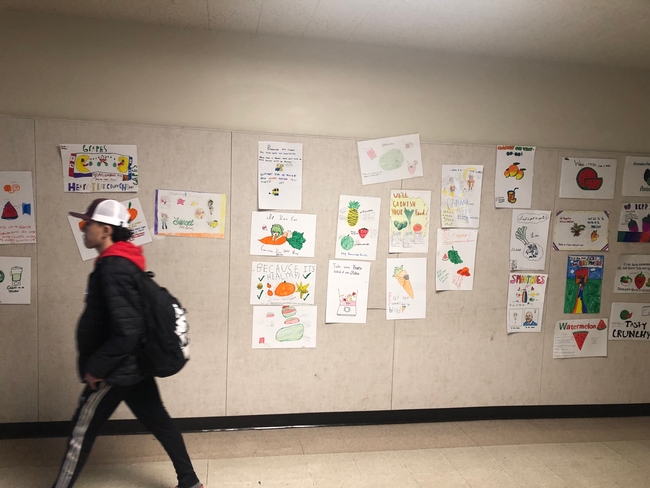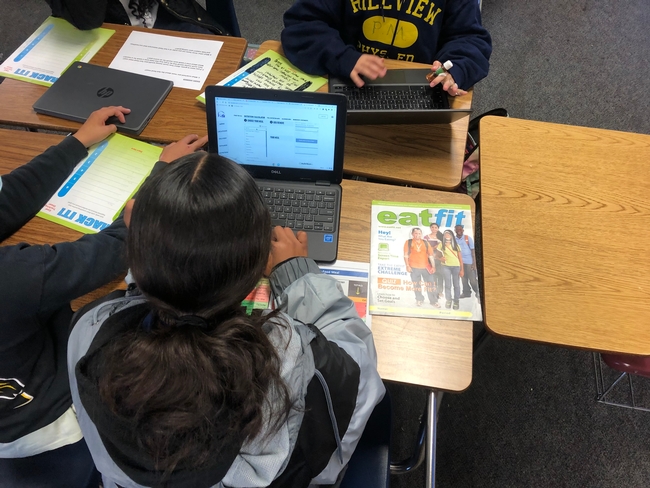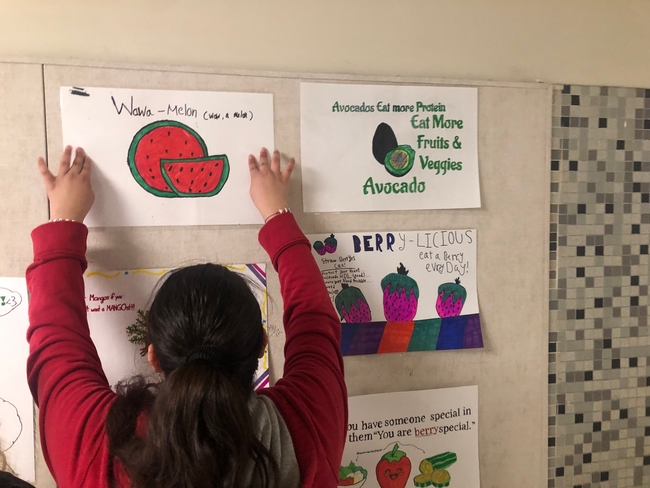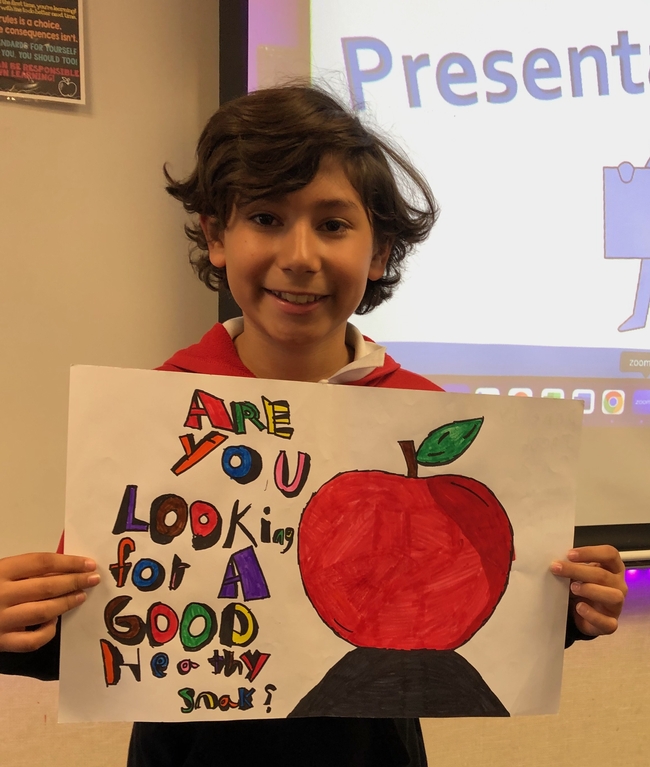CalFresh Healthy Living (CFHL), University of California Cooperative Extension (UCCE) in Contra Costa County promotes healthy communities with a nutrition education curriculum designed to improve teens' eating and fitness choices. Of the 117 middle school youth who participated in EatFit, 30% increased the number of times they ate vegetables.

The Issue
Food and beverage companies invest over $1 billion in marketing each year to advertise their food products to Black and Hispanic consumers, specifically the youth. Students at Hillview Jr. High School (HJHS)–which is located in a low-income neighborhood of Pittsburg and has a 60% Hispanic and 19% African American student population– are not exempt from these widespread and targeted food marketing campaigns. Fast food restaurants, convenience stores, and gas stations line the main street avenue near the school, attracting hungry teens.The easy availability and promotion of these foods, which are linked to negative life-long consequences, influence the food choices made by youth every day. When hunger strikes, healthy eating and active living are out of sight and out of mind to many teens.
How UC Delivers
CFHL, UCCE in Contra Costa County partnered with HJHS to deliver EatFit during the 2022-2023 school year. EatFit is a nutrition education goal-setting curriculum designed to challenge middle school students to improve their eating and fitness choices. The program reached 149 students who participated in activities focused on goal setting, nutrition facts label, energy, breakfast, exercise, fast food, and the media's influence on food choices.

In one of the EatFit lessons, students learned about food marketing. They were asked to name a commercial or ad on the Internet about water or healthy food. None could. However, when asked for examples of fast food or soda ads and commercials, all hands went up. Some students even sang the jingle or acted out the commercial. Students realized that food companies target young people and hardly promote healthy foods. Instead, TV commercials and advertisements on the Internet and social media try to persuade teens to eat and drink unhealthy foods and sugary beverages that harm their health. In the same lesson, students also learned about food marketing techniques and were encouraged to create fruit and vegetable posters to promote healthy choices at school.
With support from the principal, the school's busiest hallways were decorated with students' colorful fruit and vegetable posters. Not one poster was vandalized or torn off.
The Impact
One hundred and seventeen students in grades 6-8 completed the Eating and Activity Tool for Students (EATS) pre-post survey at Hillview Jr. High to assess changes in their behaviors after participating in the FY 2023 EatFit lesson series. Respondents were ten to thirteen years old, and identified as Latino or Hispanic (48%), Black or African American (18%), or more than one race (27%). After taking part in EatFit, the student survey results included the following:
- 34% increased the number of time they ate fruit yesterday.
- 30% increased the number of time they ate vegetables yesterday.
- 50% reduced the number of times they drank sweetened beverages yesterday - with the largest decreases seen in fruit drinks, soda, and sweetened coffees and teas.
- 40% increased the number of days they were physically active for 60 minutes or more last week.
“One change I made to eat healthier/be more physically active is to exercise/stretch when I wake up and lower how much unhealthy food I eat (high fat food, high calories etc) and start eating more fruits and veggies.” — EatFit Participant
This work is vital in adolescents as they begin to become more independent in the way they think, learn, and interact with food. Likewise, nutrition education intervention efforts in majority Black, Indigenous, and People of Color (BIPOC) communities are of particular importance because these groups have been expressly targeted as potential consumers of nutrient-poor food while also facing barriers to accessing affordable and convenient healthy food. By supporting students to reflect critically on how unhealthy food and beverages are advertised to them and then develop their counter-messages to promote healthy choices, inclusive SNAP-Ed-approved programs like EatFit and others can help improve nutrition behaviors among low-income adolescent Californians and prevent the chances of developing chronic disease later in life.
CFHL, UCCE staff will continue to partner with Hillview Jr. High to deliver quality nutrition education during the 2023-2024 school year. The fruit and vegetable posters made by students serve as a friendly reminder to all that food marketing does not steal your independence; you can still make a healthy, tasty choice.
“Before, I use to just get snacks to eat them but a lot of them were unhealthy and I got cavities. During the lesson we learned that the labels are actually important. Now I check the label to compare and buy the snack that is more healthy. It is working I am more healthy and happy.”— Jacob Ponce, EatFit Participant

